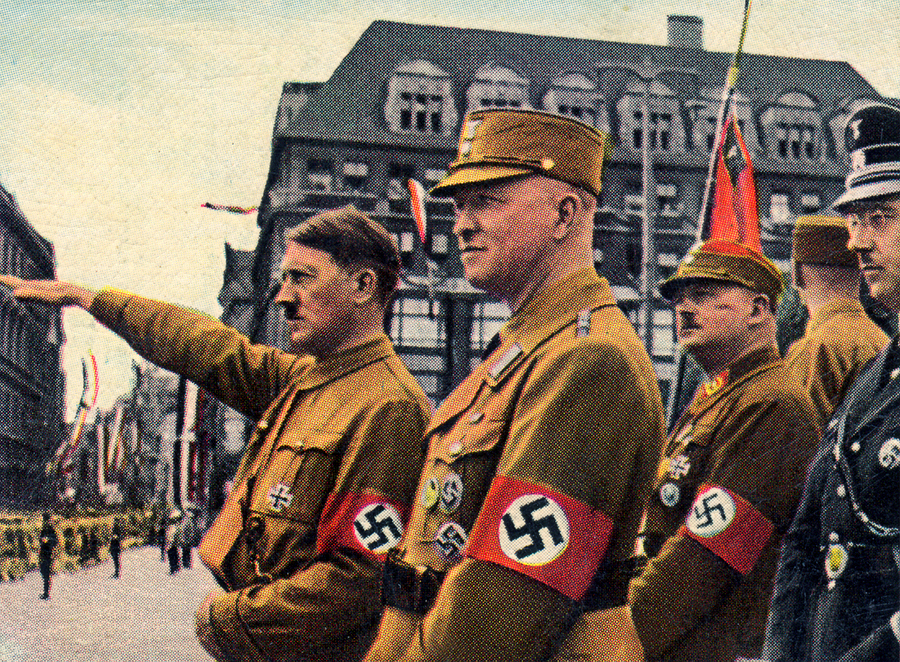History is littered with possibilities. The only thing historians love more than bickering among themselves is speculating about what might have happened if the past had played out differently.
What if JFK hadn’t been assassinated? What if the Russians had reached the moon first? What if the South had won the Civil War?
Tantalizing possibilities of what may have been gained, or lost, in a history that wasn’t.
More than 50 years ago, some of World War II’s biggest surviving military names sat down at Britain’s version of West Point to see what would have happened if Adolf Hitler had invaded England.
First, the brief backstory.
Germany was on a roll in 1940. When its panzers were unleashed on France that May, it fell in weeks.
Tiny England faced the Nazis alone. The U.S. was mired in official neutrality, and Hitler had cut a secret deal the year before that kept the Soviets on the sidelines. Churchill vowed to “never surrender,” but self-styled “realists” dismissed it as bluff talk. Many thought Britain would soon be the next entrée on the Nazis’ buffet of nations.
Germany’s high command began preparing for Operation Sea Lion. Target date: September 1940.
Right off the bat, Germany faced a big problem. Sure, it had plenty of fast planes, ferocious tanks and lots of soldiers. But how to get it all across the English Channel?
It didn’t have landing craft like the Allies would use so successfully when they stormed the Normandy beaches four years later. So German engineers scrambled to convert river barges into coastal landing vessels. It was like turning a camel into a racehorse — and about as successful.
Then there was air superiority. Though Germany’s Luftwaffe was mighty, Britain’s Royal Air Force was audacious. It had to be obliterated before a channel crossing could be attempted.
So Hitler began the Battle of Britain. It didn’t go the way he planned. Brits are scrappy fighters, and they were at their best defending their skies. Hitler got a severe case of cold feet. A different invasion had seized his imagination: a massive surprise attack on the U.S.S.R., which he launched in June 1941.
America eventually entered the war, and with U.S.-British-Canadian forces driving from the west as the Red Army roared in from the east, Hitler put a pistol to his head in his Berlin bunker and pulled the trigger.
So Operation Sea Lion never happened.
Until 1974.
Three decades after the war, experts decided it was time to determine once and for all what would have happened if the Germans had invaded. And it was no argument among barstool blowhards, either. It was a very serious, scholarly, detailed exercise.
The Daily Telegraph newspaper partnered with Sandhurst, the Royal Military Academy, which hosted the event.
A scale model of southeast England, the English Channel and northern France was built. All troops, boats and planes available to both sides were factored in. September 1940’s weather conditions were included.
Surviving brass from both sides recreated their original roles. Luftwaffe fighter ace Adolf Galland headed the German team. Retired Air Chief Marshal Sir Christopher Neil Foxley-Norris headed the Brits. In all, more than 50 decision-makers were involved in the mock invasion.
The clock was turned back to dawn on Sept. 22, 1940, and Hitler’s forces made the move they had passed on 34 years before.
Things got off to a good start for the Germans. Some 8,000 paratroopers landed south of the famous White Cliffs of Dover. More than 80,000 infantry followed.
Despite using those clunky barges (and losing about 25 percent of them), the first 24 hours went relatively well for the Nazis. Over the next two days, they pushed their way inland 12 miles and seized an important port (although the Brits had destroyed the docks beforehand, leaving it useless).
Then the Nazi advance stalled. Growing numbers of British troops were reaching the front. The Germans, on the other hand, were having a hard time hauling armor and artillery across the Channel. They were running low on ammo, too, forcing them to fall back to the sea.
The German commander asked “Hitler” to divert bombers from London and attack British warships. The answer from Berlin: Nein!
So the Nazis went ahead with Sea Lion’s second phase, attempting a second landing at dawn on Sept. 25. That time, the Royal Navy swept in and got to the invaders before they could get to the beach, sinking 65 percent of the barge/landing craft.
That sealed the invasion’s fate. With the RAF controlling the skies and the Royal Navy controlling the waves, the Germans withdrew.
All six of the game’s umpires unanimously declared a British victory. The German team didn’t challenge the outcome.
At least one of history’s great “what ifs” finally had an answer.


